COSMIC TOURS IN THE HEART OF
ROMANIAN PROFESSIONAL ASTRONOMY
Text (including astrohaiku, astro-tipuritura-strigatura and astroquatrains)
and photos Andrei Dorian Gheorghe
Museum photos Valentin Grigore
Design Florin Alexandru Stancu
*
Jupiter, Venus
and the Moon - rare trio
in the forest of time
In 2015-05-21
I had the exceptional chance to catch,
from the exterior eastern zone,
the brightest nocturnal heavenly bodies (Jupiter, Venus and the Moon),
over the national observatory of Romania
(officially, the Bucharest observatory,
or the observatory of the Astronomical Institute of the Romanian Academy,
or the state observatory, or even the Bosianu observatory) -
more precisely, over its time pavilion -
among the tree branches of the national astronomical park
(officially, the scientific park of the Astronomical Institute).
Then, in 2018-04-28
I celebrated, as a simple citizen, 110 years of existence of this institution
only through a few photos, from a similar position,
with the sunset near its central building.
Sentimentally, I felt myself connected to this institution
through a superb memory.
Thus, in the 2000s
director Magda Stavinschi used to organize over here
annual national sessions of lectures
(two for professionals and one for amateurs).
2004 was the year of the transit of the planet Venus across the Sun,
and began for me with an astropoem which I published
in the famous and luxurious Astronomical Calendar by Guy Ottewell (USA),
and continued with a Romanian national astropoetry anthology
on that phenomenon,
which I initiated, coordinated and translated,
and which, soon after the phenomenon,
was published in the web site of the European Southern Observatory.
Obviously, at the 2004 session of the Astronomical Institute,
the team of SARM made two presentations:
the president Valentin Grigore told about the observations of
the Transit of Venus
made by him and other amateur astronomers in Romania,
while I made an astropoetry presentation
(practically, the first one in the history of the institutions
which existed on the Bosianu estate)
and I proudly read the first astropoem
directly from that amazing American calendar,
which was made with the participation of an international elite team,
under the emblems of the Furman University, Astronomical League
and the magazine Sky and Telescope.
(However, I had to remember
another astropoetry initiative in that institution;
thus, in 1996
NATO and the astronomical institutes of France and Romania
organized right here an international workshop dedicated
to the preparation of the total solar eclipse of 1999,
and the participants received from Danut Ionescu -
an intermediary between amateur and professional astronomers at that time -
a folder with an astropoem on the theme of that phenomenon,
written also by me).
15 years after, in 2019-06-05
I went again to the national observatory,
this time crossing the esplanade of the nation heroes in the Carol I Park
(beside the Monument, with the vision of the Palace of Parliament),
and I caught a new sunset.
The national observatory was founded in 1908 by
astronomer Nicolae Coculescu (1866-1952)
with the support of
astronomer-minister Spiru Haret (1851-1912).
Both of them studied mathematics at Paris
and earned Ph. D with works on astronomy,
both of them were interested in the solar system’s astronomy,
and both of them shone in pedagogy:
Spiru Haret (whose name is carried today by a lunar crater) became
the best ever minister of education in Romania,
while Nicolae Coculescu became the dean
of the Faculty of Sciences (1928-1932) in Bucharest
and, for 29 years, led the national observatory,
where I found an impressive portrait of him.
The main building of the national observatory was inaugurated in 1912
and includes the equatorial dome, the meridian (museum) hall,
the time pavilion (made later), more offices
and a conference hall (officially, the planetarium hall,
made after the 1989 Romanian anticommunist revolution).
During over one century,
many valuable professional astronomers made research
on the main themes of astronomy and astrophysics over here,
some of them becoming illustrious, such as
Gheorghe Demetrescu and Constantin Parvulescu
(whose names are carried by two asteroids today).
The observatory also participated at many international programs,
such as:
-the international campaign of longitude measurements in the interwar times;
-International Geophysical Year, BIH, Etalonnoe Vremya, MERIT,
INTERCOSMOS, IERS etc. in the communist era,
which added two new buildings (without architectural value),
the sun dome and the telescope building;
-many others after 1990, culminating with programs of ESA
and missions of NASA and ESA.
Also after 1990, many other professional astronomers, after careers over here,
started from the Astronomical Institute of the Romanian Academy
to work at famous observatories from all over the world,
and I’ll remember only
Mirel Birlan (who works at the Paris Observatory
and convinced the International Astronomical Union
to name an asteroid just… Romania!),
Miruna Popescu (who worked at the Armagh Observatory
and coordinated the International Year of Astronomy in Ireland)
and Ovidiu Vaduvescu (who worked at more observatories
in Europe, North America, South Africa, South America, Hawaii,
and now he works at ING in the Canary Island,
where he coordinates the EURONEAR project,
discovering asteroids
and naming them after Romanian personalities in astronomy).
The national observatory also received important visitors in its history,
such as the general manager of NASA in 1999
and the director of the Vatican Observatory in 2019.
One of these visitors was in 2017
the American astronomer Connie Walker
(senior employee of USA’s National Optical Astronomy Observatory,
director of the Globe at Night world project,
chair of the Dark Sky Awareness
during the International Year of Astronomy in 2009
and later coordinator of the similar programs
of the annual Global Astronomy Month,
an asteroid being named after her).
The president of the Romanian Society for Meteors and Astronomy (SARM),
Valentin Grigore,
was her companion and photographer during this visit in Bucharest,
which began with the Palace of Parliament.
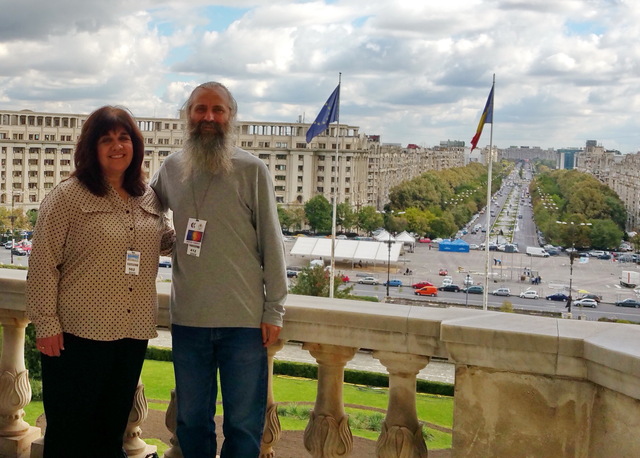
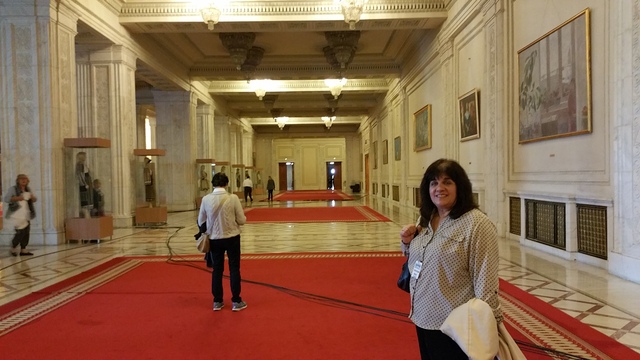
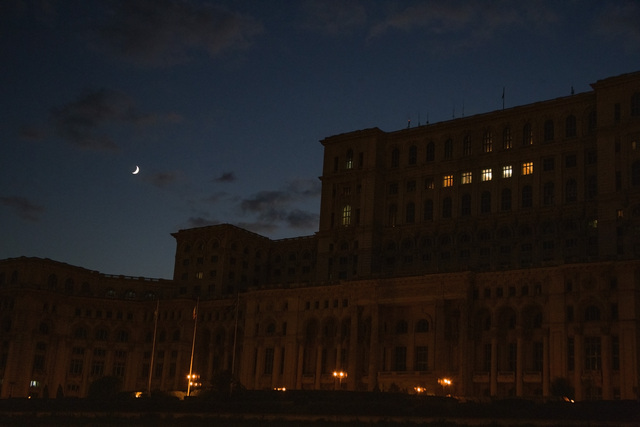
Then they moved to the Astronomical Institute,
where even Magda Stavinschi
(director of this institution in between 1990 and 2005,
coordinator of the International Year of Astronomy in Romania,
former president of two commissions of the International Astronomical Union
and not in the least the best historian of the national astronomical park)
was her guide in the meridian hall,
a veritable museum with historical instruments -
culminating with the meridian lunette -,
documents and photographs,
and even souvenirs from the 1999 total solar eclipse.


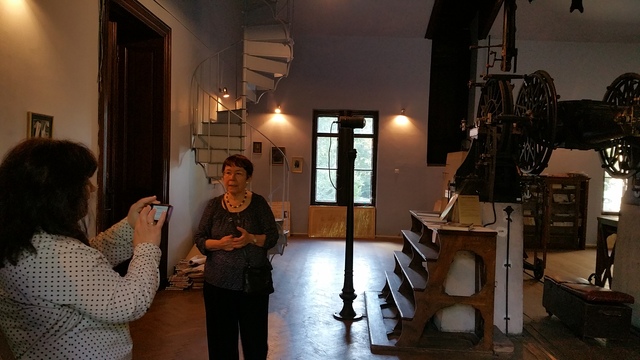
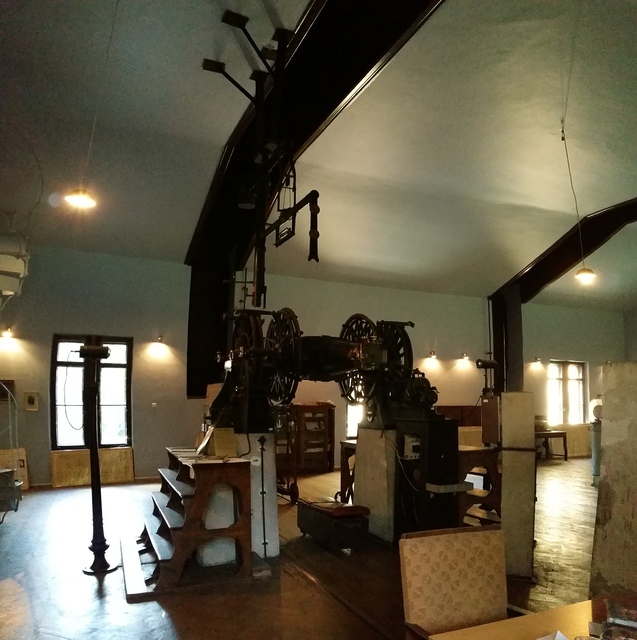
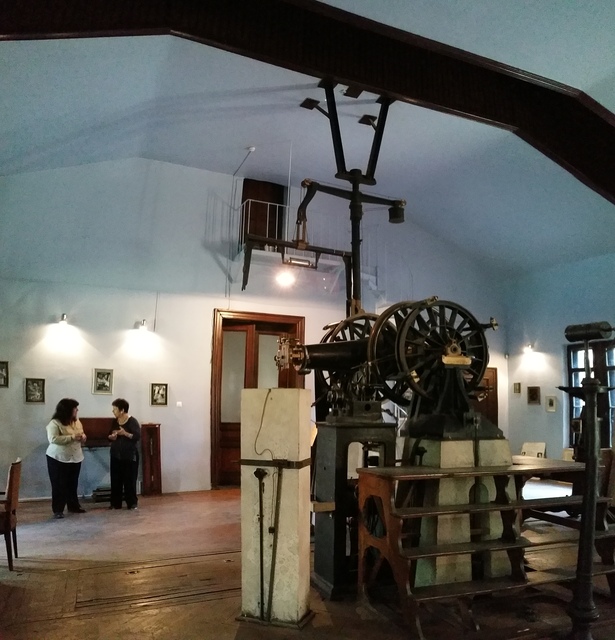
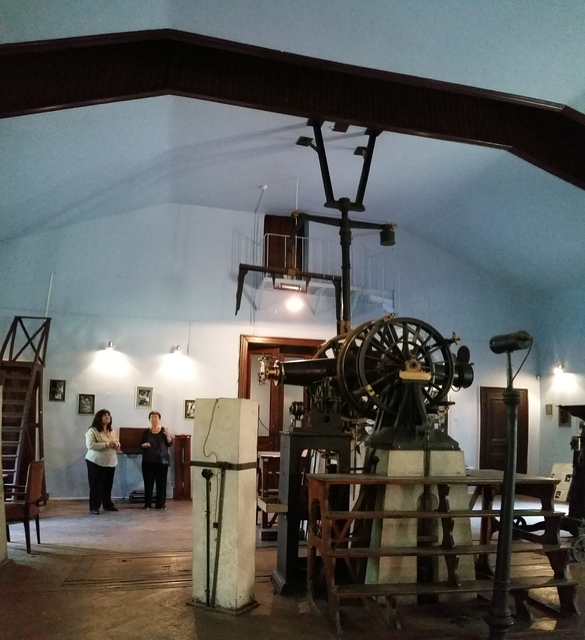
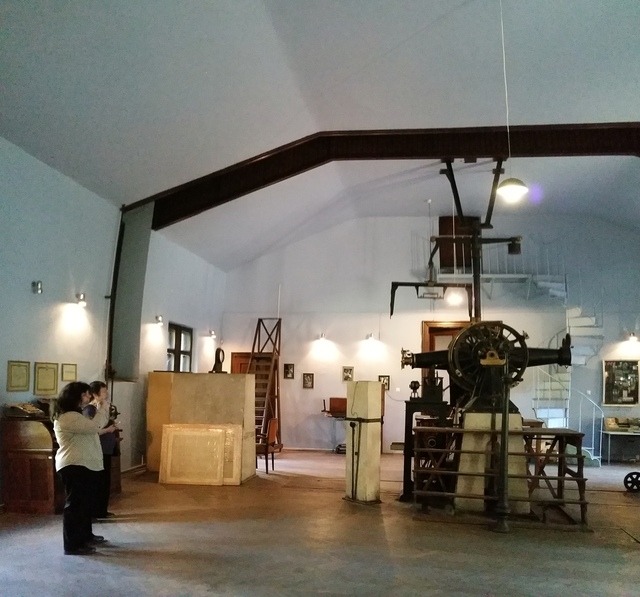
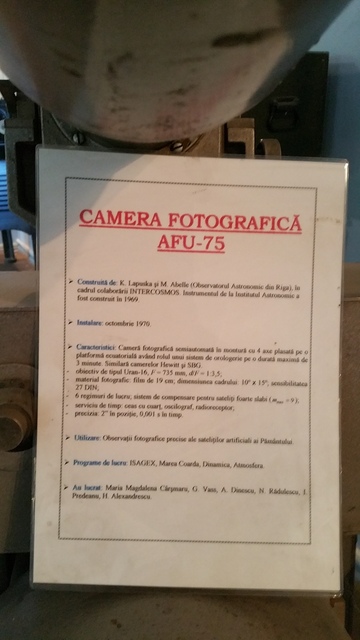
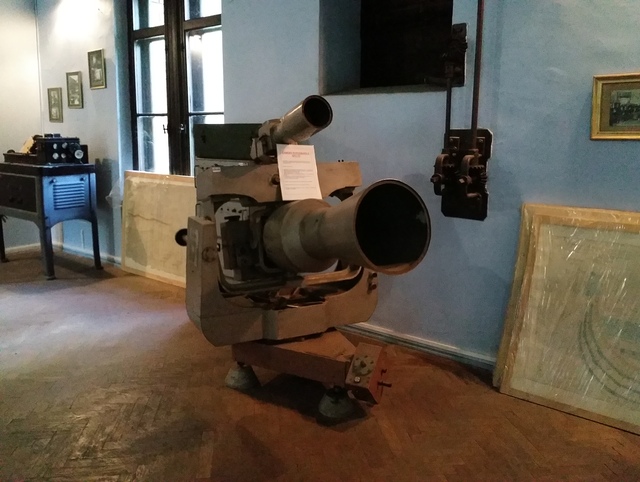
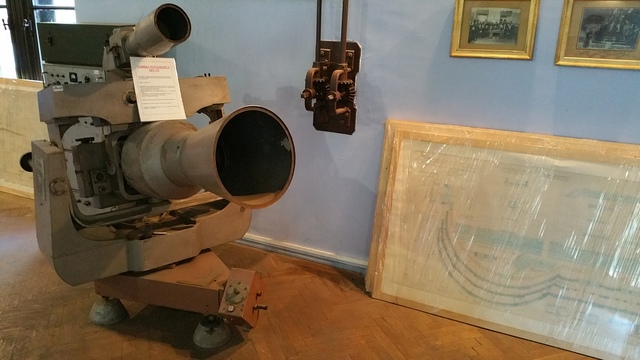
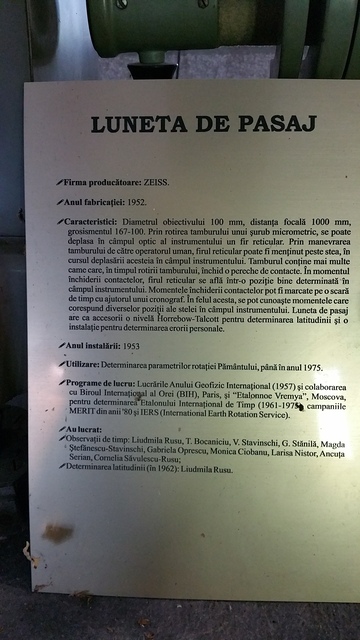
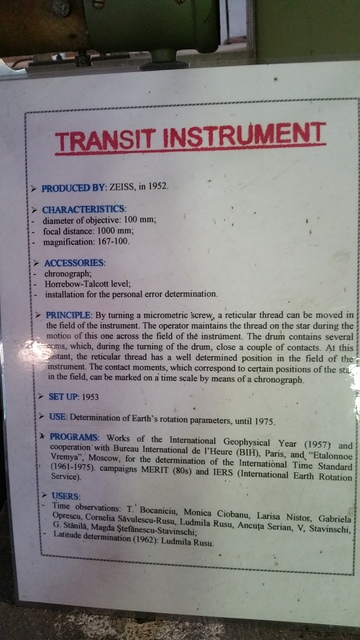
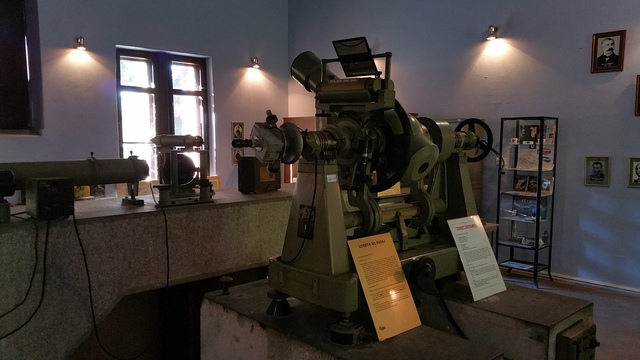
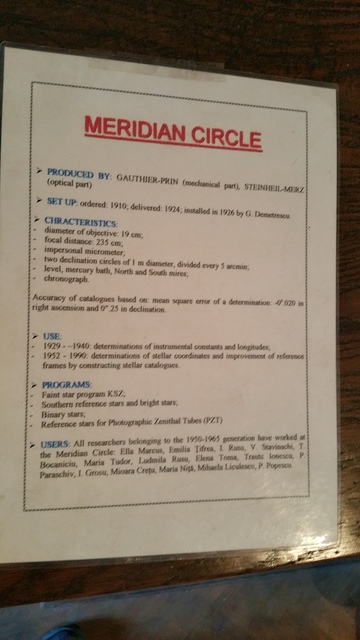
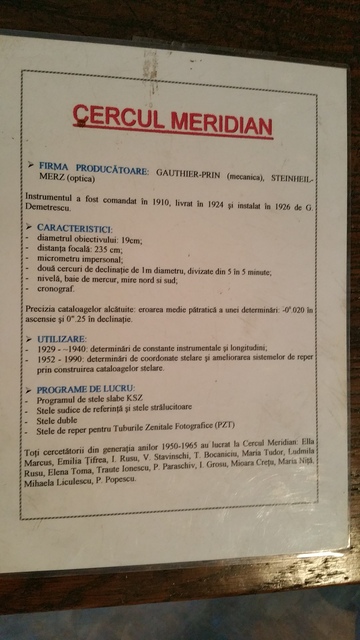
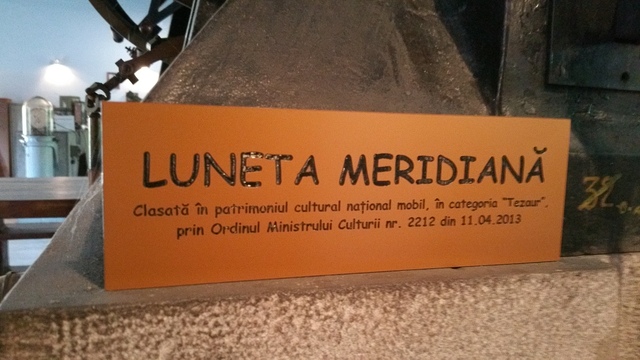
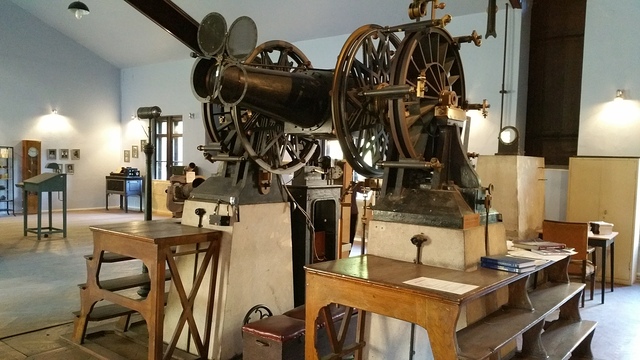
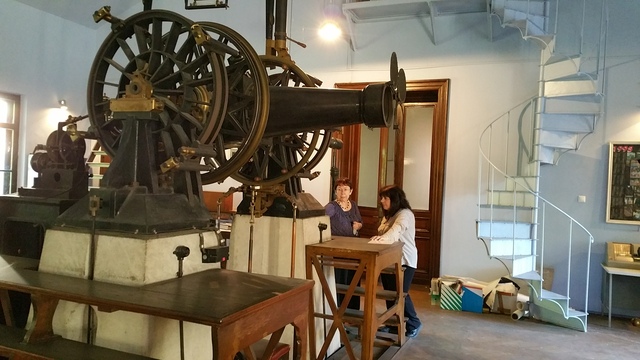
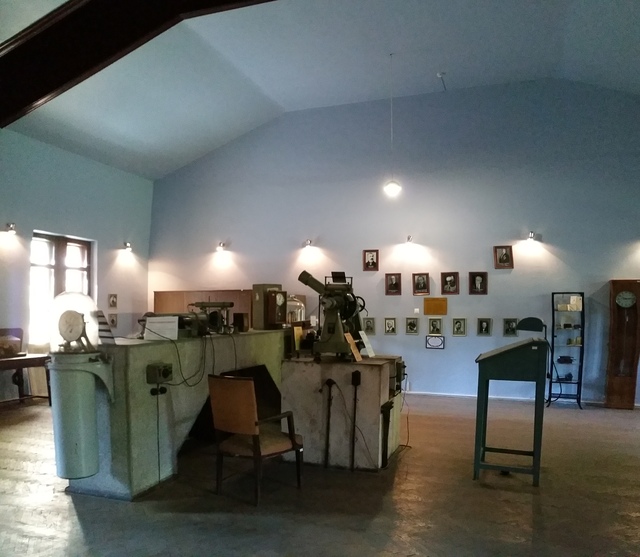
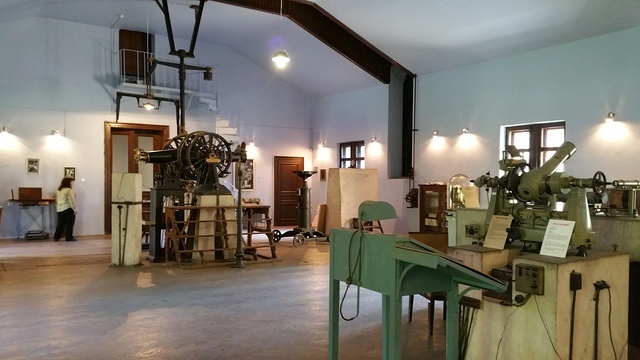
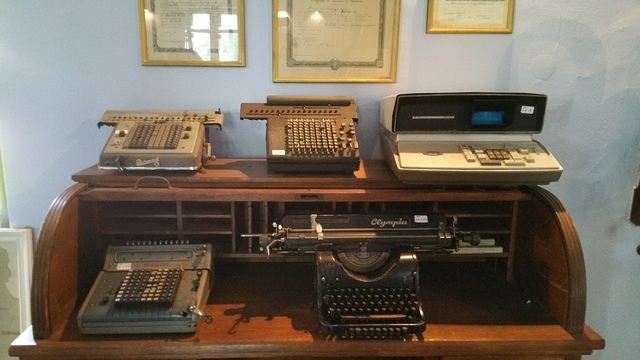
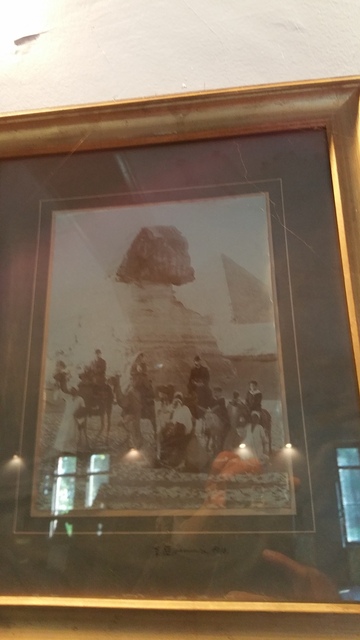
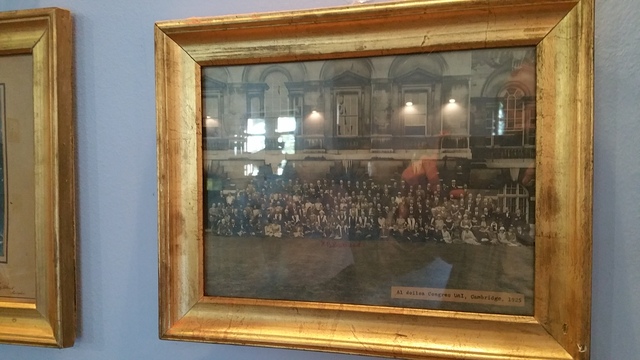
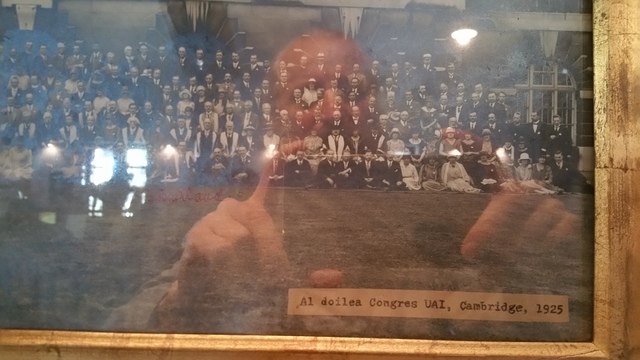
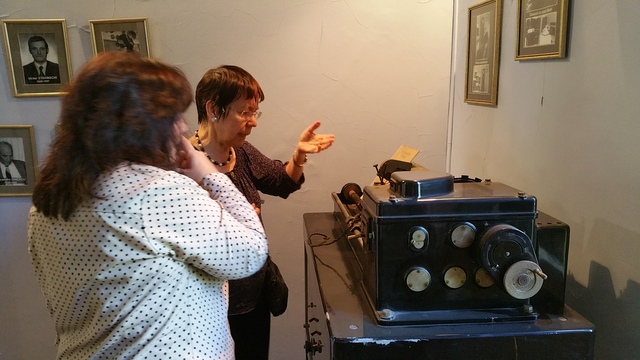
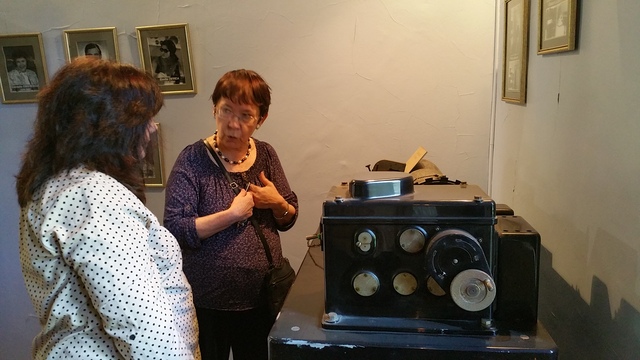
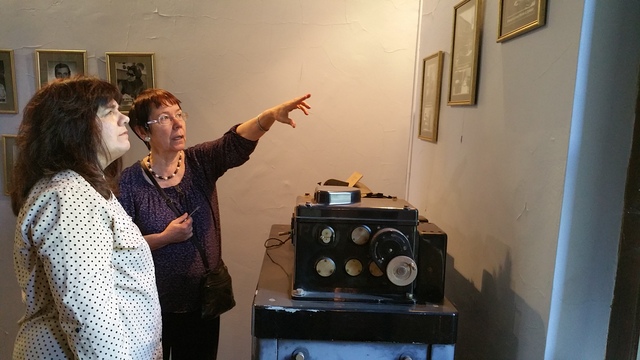
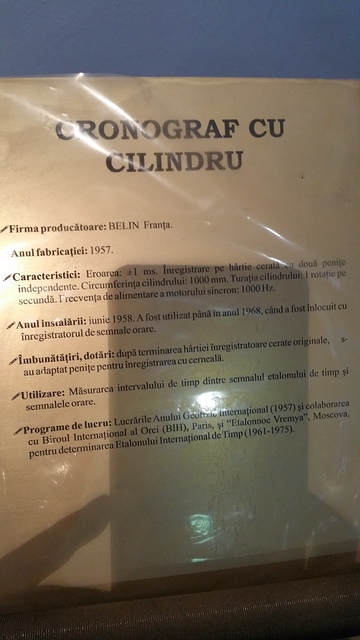
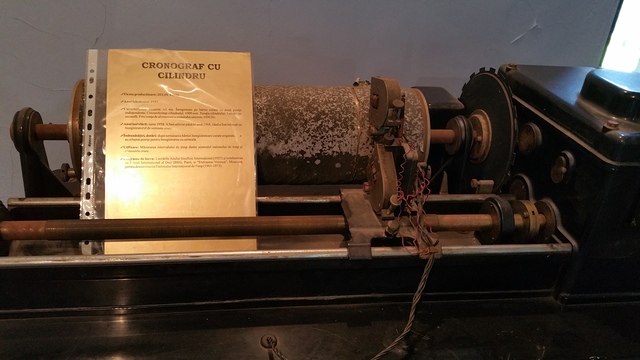
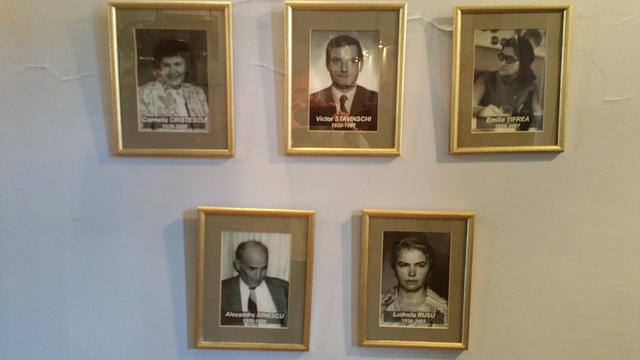
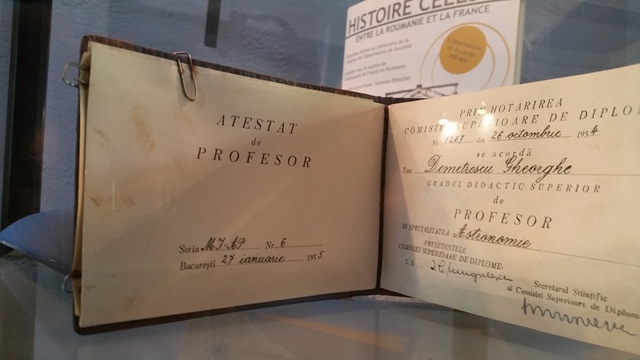
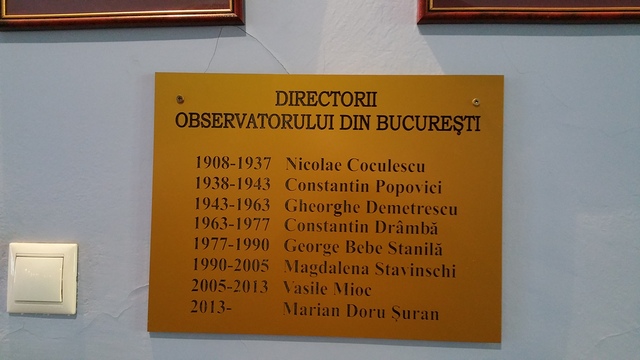
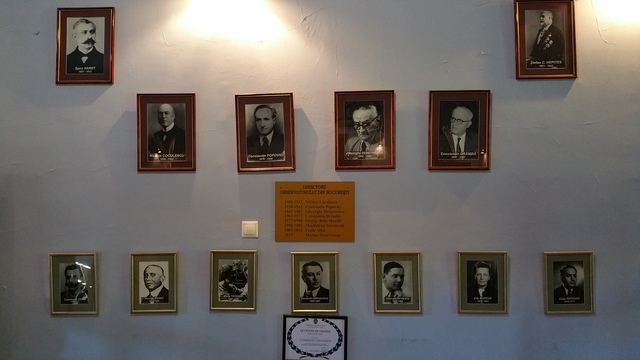
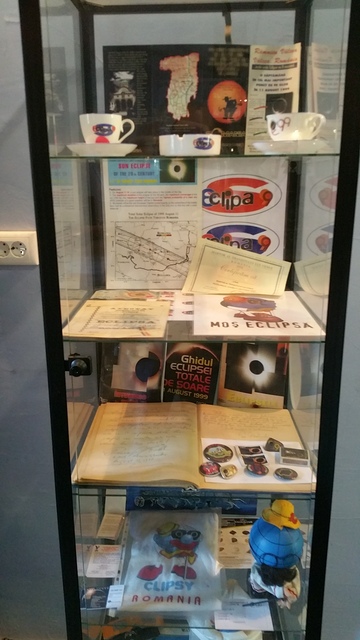
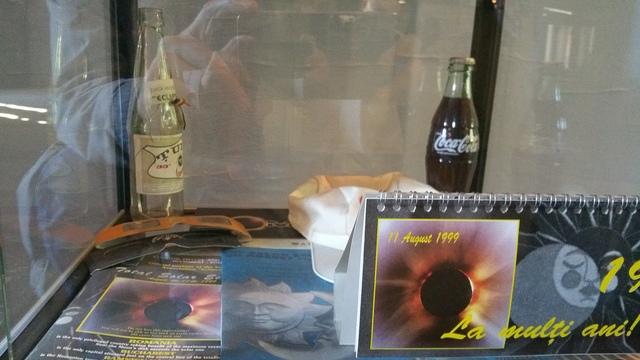
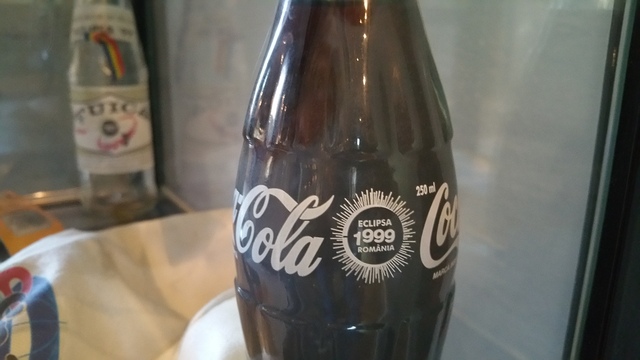
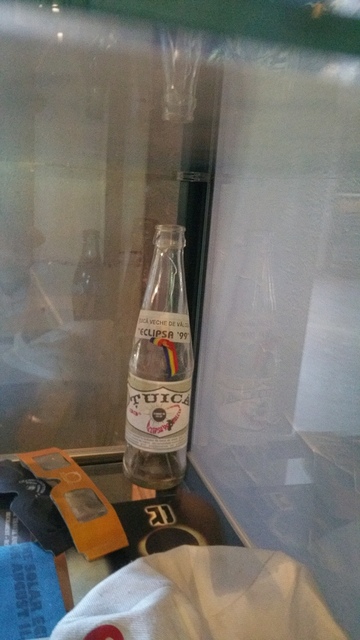
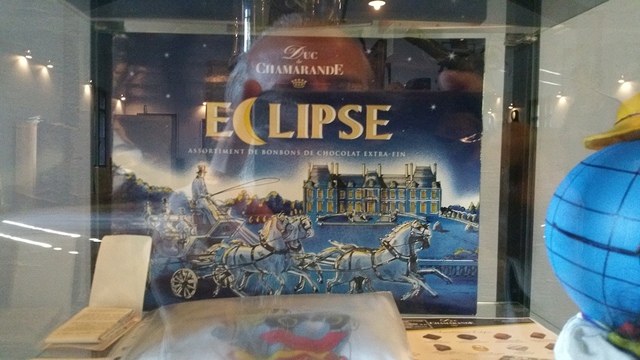
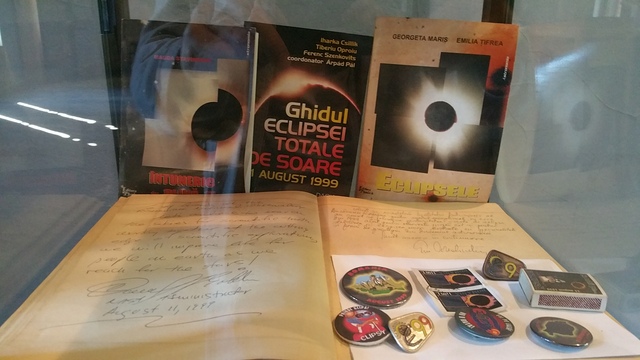
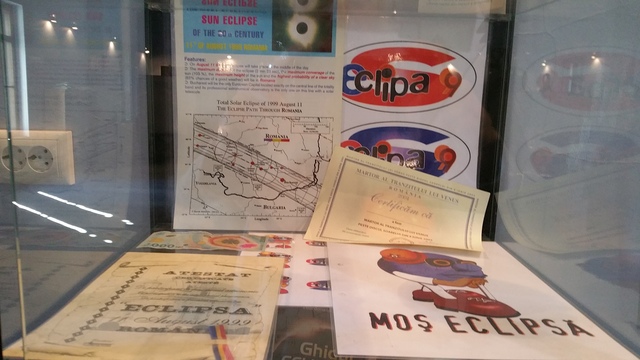
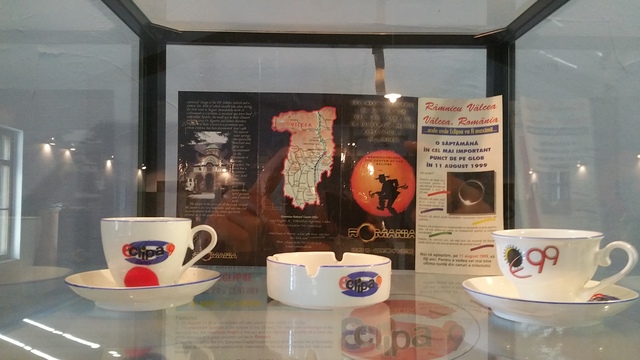
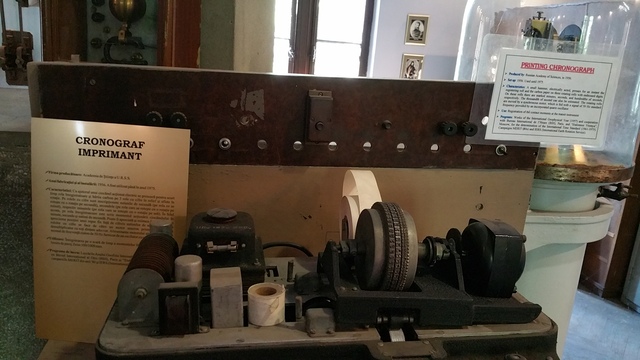
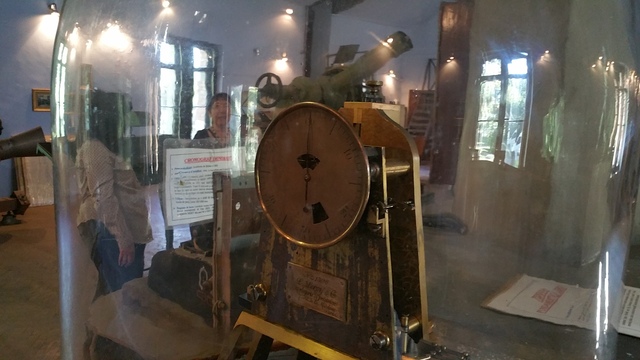
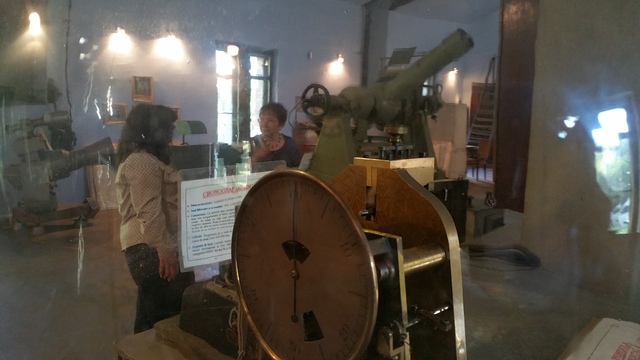
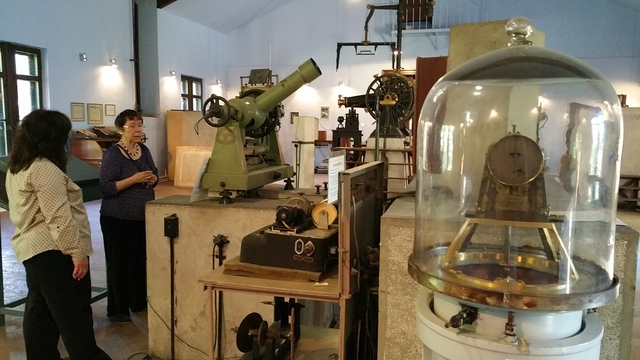
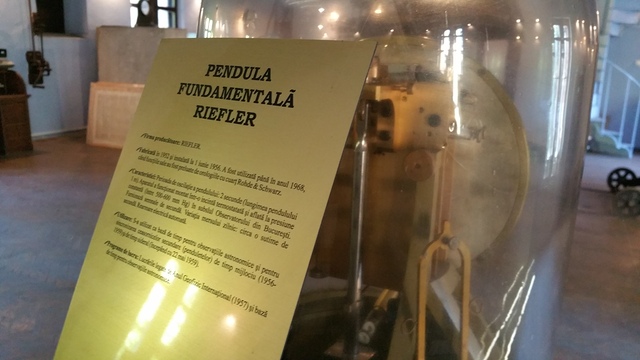
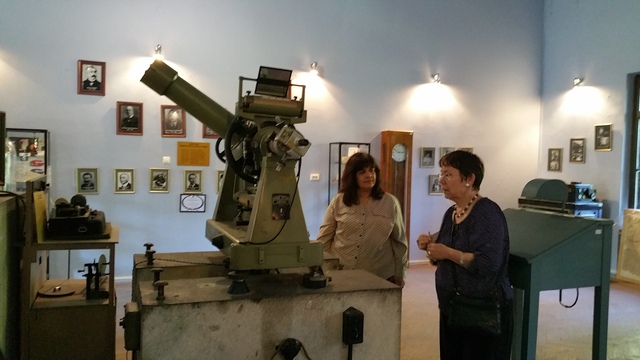
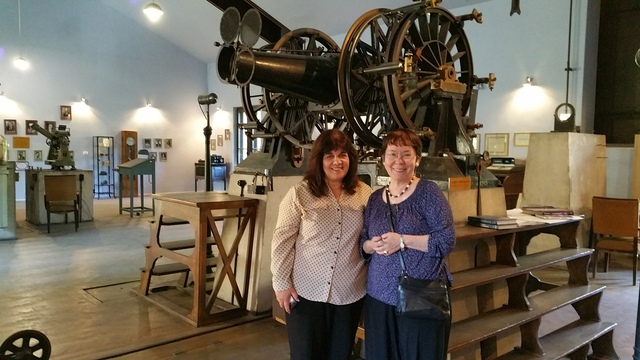
At the equatorial dome with another guide…
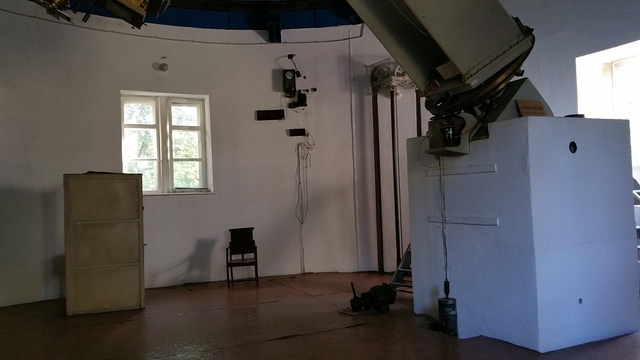
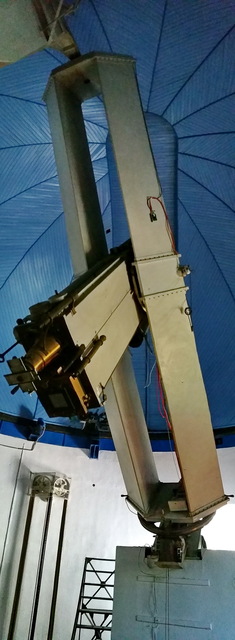
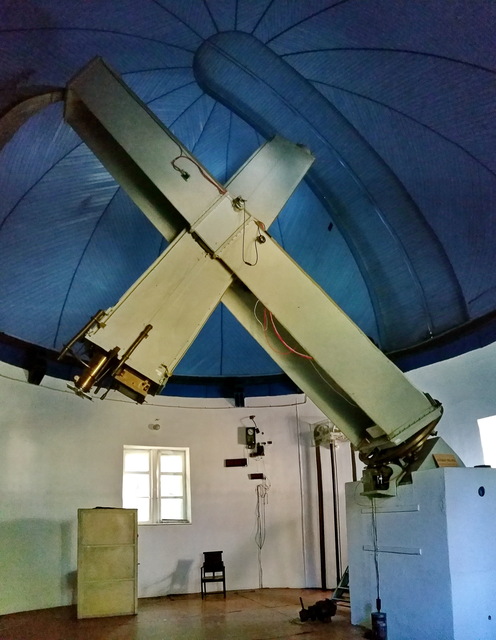
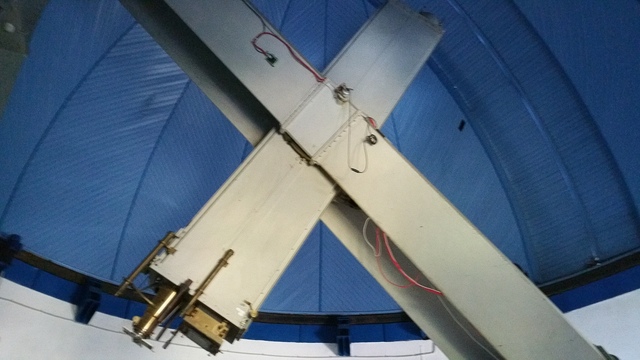
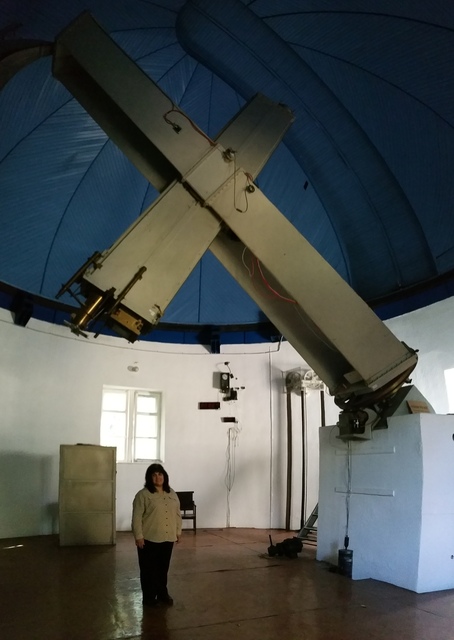
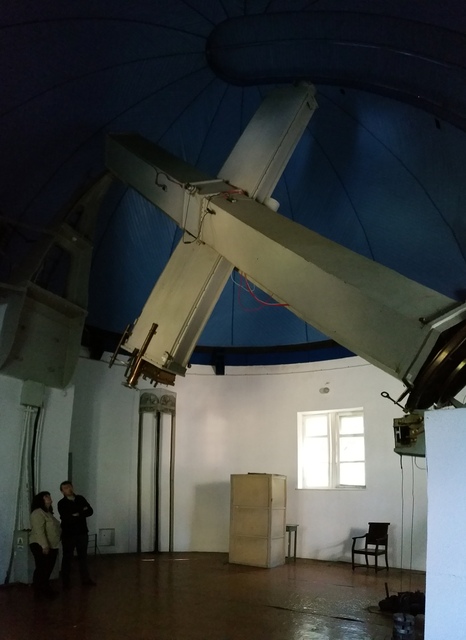
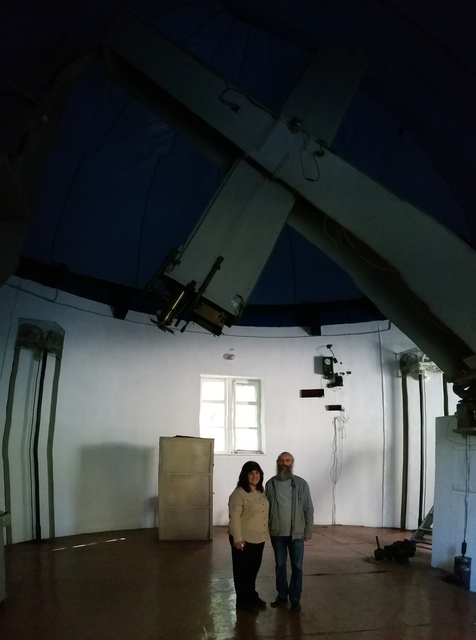
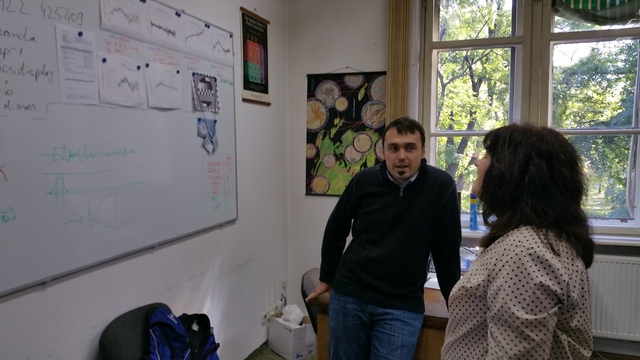
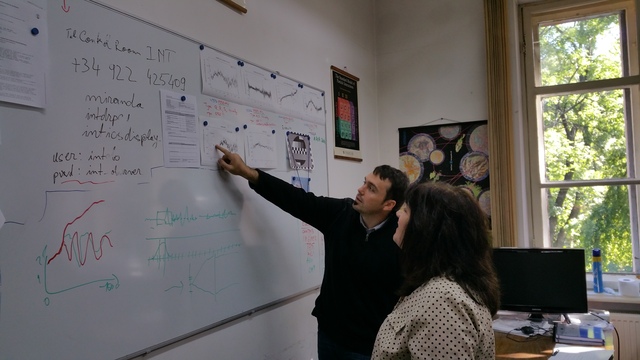
Finally, a short talk in the office of the new director, Alin Nedelcu,
a few impressions written in the guestbook of the national observatory
and a group photo.
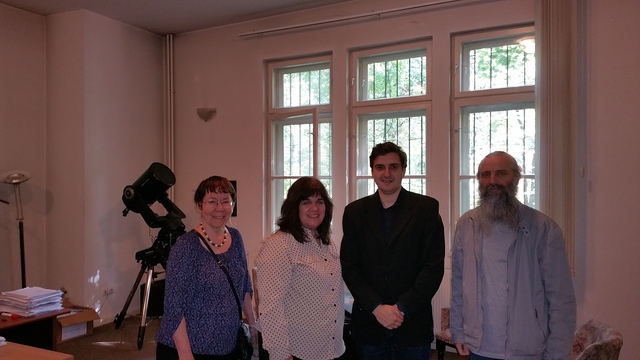
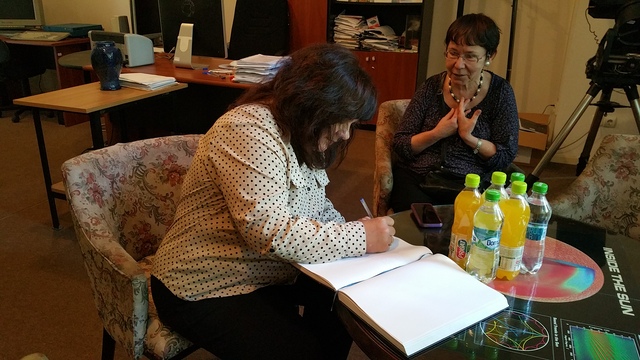
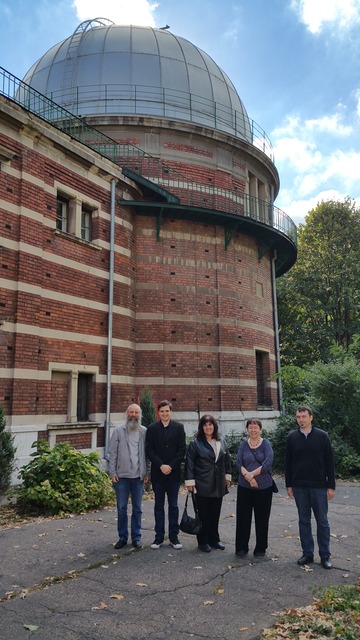
In fact, the history of the national astronomical park is much older
and began with the Bosianu House,
made in the 1850s by architect Luigi Lipizer.
Constantin Bosianu (1815-1882) was a distinguished aristocrat,
an eminent jurist and even the Romanian prime-minister for a short time.
His small palace on the Filaret Hill
was the secret place for unionists before 1859
(the union between Wallachia and Moldavia
disturbed the surrounding empires,
but it was sustained by France)
and even a shelter for the “domnitor” Alexandru Ioan Cuza,
the first ruler of the United Principalities.
But this was just the beginning and,
making a “starry” house with a six-corner tower,
it seems that Bosianu and Lipizer
had an extraordinary premonition.
After the death of Constantin Bosianu,
in the 1880s his estate became the propriety of the Romanian state
that gave it for administration to Constantin Hepites,
the founder of the Institute of Meteorology.
He moved his institution to this palace
and, using it as nucleus, expanded his activities,
founding other national services, for:
measures and weights, exact hour, seismology and geomagnetism.
As a normal consequence, in the 1890s
Bosianu’s estate was enriched with other buildings:
the sun house, the seismology pavilion, the small meridian hall
(practically, both
an astronomical hall and an astronomical proto-observatory,
in which he used a meridian lunette donated by
the state astronomer Constantin Capitaneanu;
it is also to note that these old buildings were left in lacks and ruins
by the communist regime in its last years,
but later they were restored and saved
after the campaigns led by Magda Stavinschi).
That’s why,
overtaking all these activities after Stefan Hepites’ retirement,
the new denomination of the park was, since 1908
(along with the Nicolae Coculescu’s appearance),
for over 10 years,
the Astronomical and Meteorological Observatory
(later, the meteorological centre was moved to other location,
but a meteorological station has remained still active over here).
So… I think that Stefan Hepites could be considered also
the proto-founder of the national observatory… -
a picture in the big meridian hall with him
was remarked by Valentin Grigore in 2017.
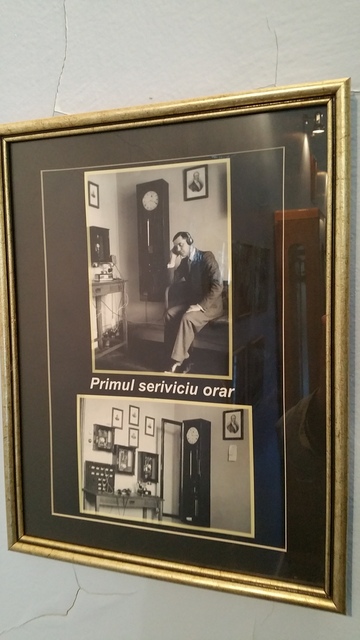
In 2019-06-05
I tried an incomplete tour of the national astronomical park:
it was late and I stopped after I saw
the seismologic pavilion, the sun house and the Bosianu House,
which was used for the meetings of the Romanian National Astronomical Committee
in the 1930s
and became the seat of the library of the Astronomical Institute
after 1990.
To make a starry house
In any kind of park
Means eternal light
Through any kind of dark.
For many years,
the Astronomical Institute was seen from outside
rather as a hardly accessible fortress of science,
with too serious people who made too advanced research,
but in the last years things have changed a little:
the institution organizes not only the day of the open gates for the public at large,
but also tours through the astronomical park for groups of visitors
and allows meetings of the amateur astronomers of the Bucharest Astroclub.
Certainly, a new good beginning,
but the way toward the hearts of the amateur astronomers
from all over the country
is much longer.
To fairly manage an astronomical Olympus
Is something quite hard,
You have to run thousands of kilometers,
Not only one yard.
An interesting meeting of this kind in 2019
was on the evening of June 5th,
when a special guest who came from South Pacific,
Haritina Mogosanu
(a Romanian sky lover who emigrated to New Zealand in the 2000s,
where she became an astronomer at the Wellington public observatory,
president of the Mars Society
and executive director of New Zealand Astrobiology Network),
told about her career
(including participations in two “Martian” expeditions
through the Utah Desert in USA,
the first with the space agency of Romania
and the second with the space agency of New Zealand)
and presented a vision of the southern sky
(accompanied by her current fellow,
Samuel Leske, an excelent astrophotographer).
Finally, I took a picture with Erika Lucia Suhay
(president of the Romanian Association of Education through Astronomy
and an exceptional composer of problems for the national astronomical olympiads)
and an old amateur astronomer, Stefan Calin.
The astronomical park became in 1906
the south-east corner of a larger park,
named after King Carol I
(which was inaugurated through a national general exhibition),
and today its western part is placed on a quiet street, Silver Knight,
with more aristocratic houses from the 1900s.
In October 2019 (17 and 18)
I made another partial tour through the astronomical park,
this time under the full daylight.
On that occasion I had the honor to be part
of a Romanian-French professional conference,
“Honoring IAU 100”.
Nothing more adequate,
all the first Romanian professional astronomers
in the 19th century and the beginning of the 20th century,
who created specialized institutions,
studied in France,
while, regarding the amateur astronomers,
the first astronomical society in Romania was founded in 1908
by Victor Anestin
mainly with Romanian sky lovers who were members
of the similar society of France,
and was named just
the Flammarion Romanian Astronnomical Society,
after the famous president of the French Astronomical Society.
After this beginning,
Romanian astronomers have always remained
close to French astronomers,
especially because the International Astronomical Union
was created in France in 1919 (Romania became a member in 1922)
and France continues to host its headquarters in Paris.
In this respect, another old picture
remarked by Valentin Grigore in the meridian hall,
impressed me very much:
Queen Maria of Romania together with Camille Flammarion
in France, 1921!
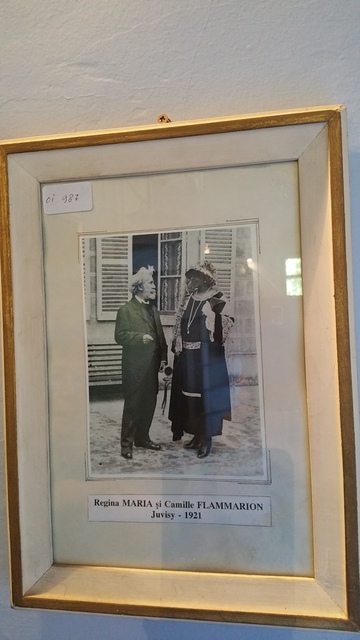
This very interesting conference
(with the Romanian professional astronomers
and a few French professional astronomers as special guests)
took place under a generic title,
"New Horizons in Space and Planetary Astrophysics”,
and was an opportunity for me to see
how far the astronomical research has evolved in the world
and in Romania.
It was coordinated by two eminent astronomers,
the president of the Romanian National Astronomical Committee,
Mirel Birlan (who works at the Paris Observatory since 1999)
and the new and enthusiastic director
of the Astronomical Institute of the Romanian Academy,
Alin Nedelcu (who also worked at the Paris Observatory for a while),
their names being carried by two asteroids after…
French proposals to the International Astronomical Union.
On that occasion, SARM (through Valentin Grigore and me)
gave the first cosmopoetry mini-show
(it is true, 19 years after one which we gave in Tel-Aviv
at a NASA international super-project, Leonid MAC Campaign,
and 10 years after another which we gave at the UNESCO headquarters in Paris
at a Symposium of the International Astronomical Union)
but later is better than never)
in the history of the national professional observatory
(the pictures were taken by Simon Anghel, a doctoral student in astronomy).
Also on that occasion
I remarked a series of old photos (since 1893) in the national observatory,
with its director-founder, Nicolae Coculescu,
when he made the first Romanian astronomical expedition
(Senegal, Africa)
as a member of a…
French mission that studied a total solar eclipse!
And I became so glad seeing those pictures
that I tried
a solar partial tour of the national astronomical park
(the observatory building, the Bosianu House,
the sun house - only solar reflections -, the seismologic pavilion,
the conference hall and the meridian hall).
A human work is quite well done
When it is caressed by the Sun.
A last picture remarked by Valentin Grigore in the meridian hall
seemed to be collected from a tale:
the genealogy of one of the most important painters in Romania,
George Baron Lowendal
(who was born in the Tsarist Empire
from a Danish father and a Russian mother,
emigrated to Romania because of the Bolshevik revolution,
fell in love with his new country
and became a dedicated Romanian artist and man,
painting amazing portraits of peasants
and making a few innovations in the theatrical technology),
who was related to the extraordinary Danish astronomer from the 16th century,
Tycho Brahe!!!
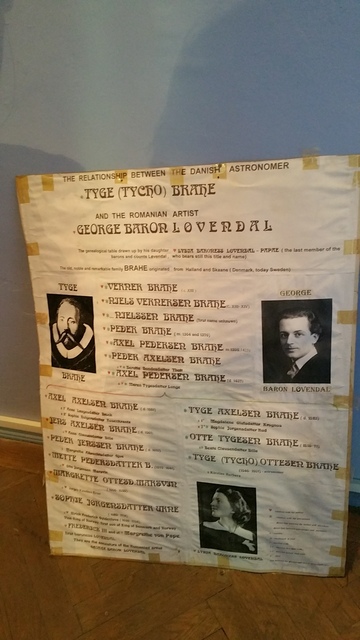
In these conditions,
finally I decided to try another cosmic tour, this time complete,
surrounding from outside the national astronomical park.
And that day came in 2019-12-04,
when the sky was clear, the temperature was of two degrees,
the trees lost many leafs and the vision of the buildings became better,
but still mysterious.
I began in the Carol I Park, from the distance,
with the national observatory under a blinding sunset,
a vision which made me write:
Isolation or solidarity?
Good question for astronomy.
Every astronomical Olympus
in this fascinating world
should be carefully led.
Otherwise… Mont Blanc, Aconcagua,
Everest and many other tops
await to be conquered.
I continued with the Monument and the Flame of the Heroes,
with the far visions of the Palace of Parliament
and the new national cathedral,
and I get closer to the observatory.
Then, the sun house and the Bosianu “starry house”
near the sunset…
The telescope building, the sun dome and the zone with
the small meridian hall, the meteorological station and the astrolabe
not only under the sunset, but also under the Moon…
Visions of the sun house, the Bosianu House and the national observatory
from the Silver Knight street…
Back to the Carol I Park,
the national observatory bathed by the dusk
and, later, by light pollution more than moonlight…
Finally, wishing (in my thought) the current leadership of
the Astronomical Institute of the Romanian Academy
to touch the highness of their predecessors,
I needed something stellar
over the central building
to complete that cosmic exterior tour
and, in spite of the tree branches,
I separately caught Altair and Vega (placed up on the right)
in two pictures
(unfortunately, the third star of the Summer Triangle, Deneb,
was not “eligible”)
and, back to the western side again,
I caught Capella over the entire observatory.
For a moment,
I thought that maybe at the same time, in the national observatory,
a professional astronomer made preparations
to photograph through the telescope the same stars,
or an asteroid, or a deep sky object…
and, in spite of the cold,
in name of unity through diversity
of the sky lovers
for the beauty of astronomy,
I said: “I have no regret,
I am just a modest amateur astronomer,
but with the proud rank of cosmopoet.”
Three stars, a triangle.
Two stars, only a line.
If there is a cupola below,
I feel quite fine.
Everywhere, invisible,
Just Newton’s apple.
Up, Capella… Down, a cupola
As an astronomical “chapel”.
*
© 2019 SARM
(Romanian Society for Meteors and Astronomy)